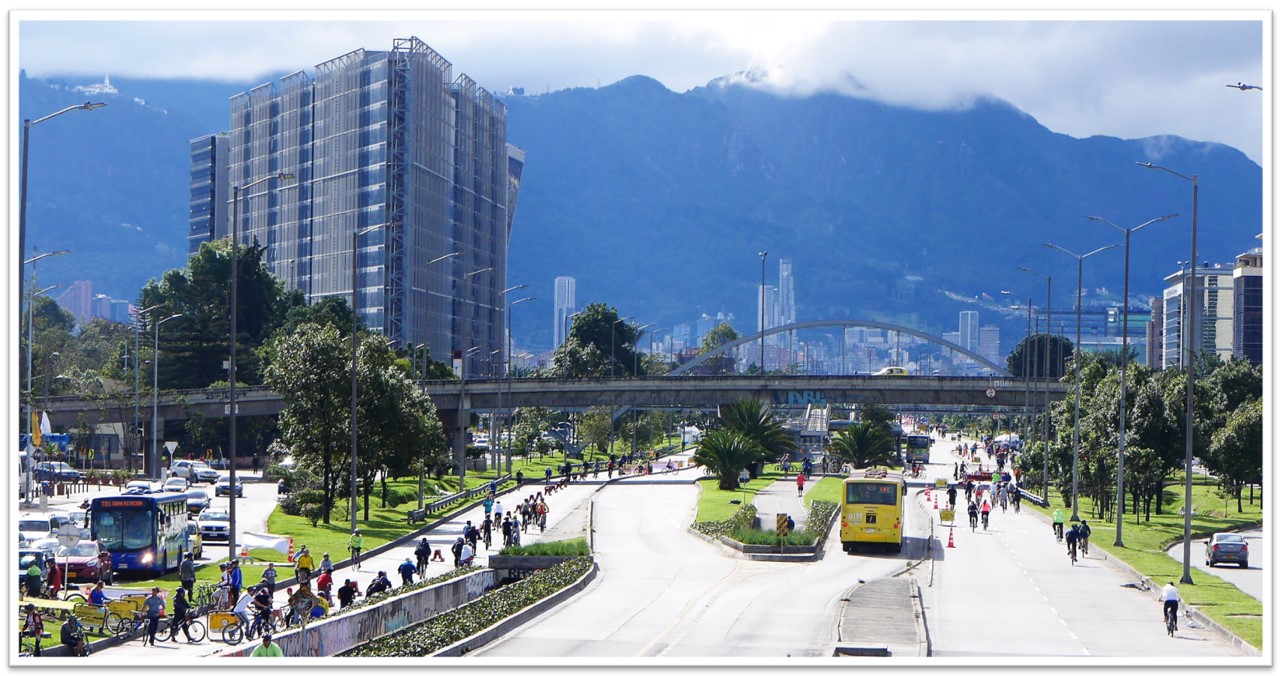Getting on Bogotá’s buses
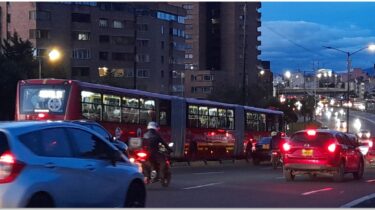
Colombia’s capital has a vast bus network that reaches every corner of the city. But being Latin America’s most congested metropolis, many journeys are slow. You might want to take a good book to read. Here’s how to make the most of Bogotá´s buses.
This was posted in June 2023, so check links for updates.
For other transport stories from the Big Bog see: Make Driving Fun, or Bicycle Tribes of Bogotá, or Dying for a Breath of Bogotá Air, Is Bogotá a 15-minute city? and Riding Bogotá´s TransmiCable
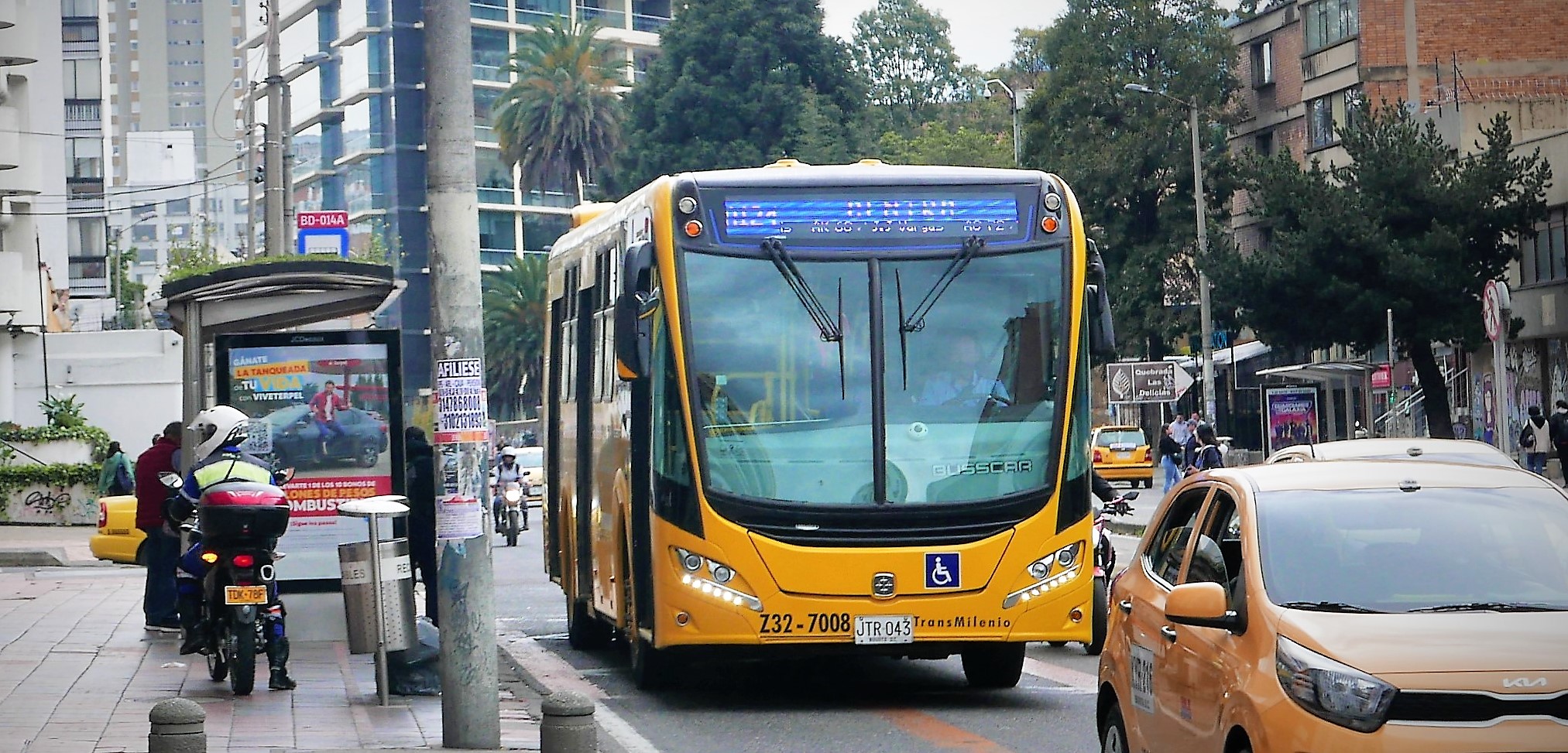

Love it or loathe it, Bogotá’s public transport system (“SITP”) has undergone a quiet revolution in recent year. City authorities have slowly kicked out (most) of the “chiminea ” smoking colectivo buses and brought in huge fleet of modern vehicules, some electric or powered by cleaner natural gas. In fact, in 2022 Bogotá had the largest electric bus fleet (1,000 +) for any city outside of China.
This shouldn’t distract from the fact that Colombia’s capital is still years away from a proper mass transit system (the much awaited Metro) . Meanwhile, many of the 10 million inhabitants rely on an amazing network of buses ranging from the double-articulated Transmilenio buses (capacity 250 persons, but often crammed fuller) with their own dedicated lanes, through a variety of smaller buses to the cable cars that carry folk to the poorest hillside communities.
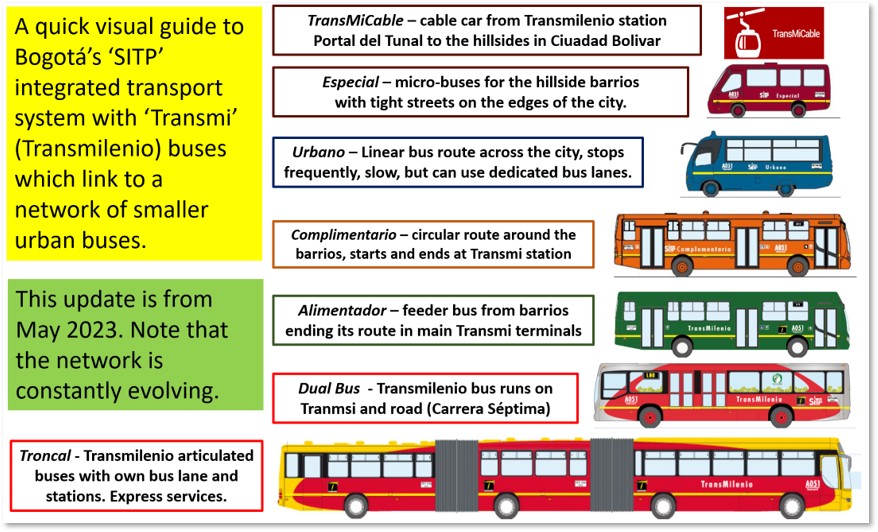
Here’s some stats: the SITP system provides 85 million passenger trips per month, comprising of:
- 2,364 Transmilenio ´bendy´ buses running 96 routes over 138 stations. These buses make 492,000 trips per month which cover a total of 11 million kilometres.
- 950 Alimentador feeder buses run 105 routes, with 480,000 trips per month covering 3 million kms.
- Another 7,500 urban buses cover 366 distinct routes via 7,500 stops making on average 890,000 trips per month.

Why take public transport?
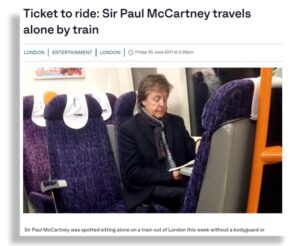
As mentioned above, Bogotá is among the ten worst cities on the world for traffic jams with drivers losing on average 122 hours per year stuck in traffic and an average downtown speed of 16 kms per hour. My blog on 15-minute cities also highlights some urban issues in Colombia’s capital. Even with stringent car restrictions (‘Pico y Placa‘) roads are still clogged, partly because of public reliance on taxis and ´platform rides´(which are cheap compared to most capital cities).
Practically, the Transmi system, though far from perfect, is much faster than car travel during peak hours. Using buses in Bogotá can reduce congestion and contamination. Music stars like Paul McCartney and Chris Martin use public transport in other parts of the world. Could it happen here too?
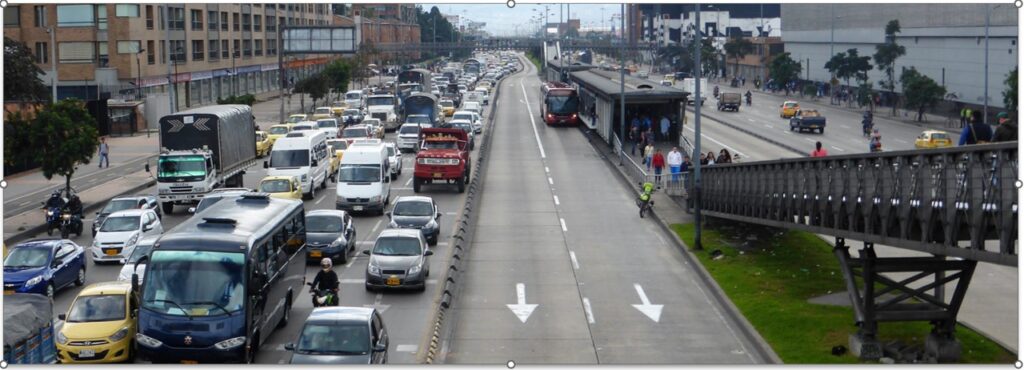
How to pay for Bogotá’s buses?
First buy a Tullave card (cost is COP 7,000 or around US$1.6) at the kiosk in any Transmilenio station, and charge it with credit. Current fees are COP 2,950 (US 70 cents) for a Transmi journey (any lenght) or COP2,750 (US 60 cents) for a single journey.
Second, you can save a lot of money by PERSONALISING your Tullave card at certain larger Transmi stations (see link for where), show your cedula or passport. Your Tullave card will now give large discounts when travelling across the city as you will not be charged for subsequent trips within a time limit (usually 80 minutes). Older folk like me get an extra discount too.

How to find your way by bus around Bogotá?
Planning your bus journey across Bogotá can be daunting: there are usually various ways to reach your destination, and route plans are often complicated with buses displaying destinations you’ve probably never heard of.

There are various Apps and Websites that can help: Google Maps ´directions´gives bus routes as an option, there is also the Moovit App and the Transmi App (all on Google or Apple app stores). Transmilienio and Tullave have route finders and interactive maps. In general the phone apps are more useful, and Google Maps is a good back-up..
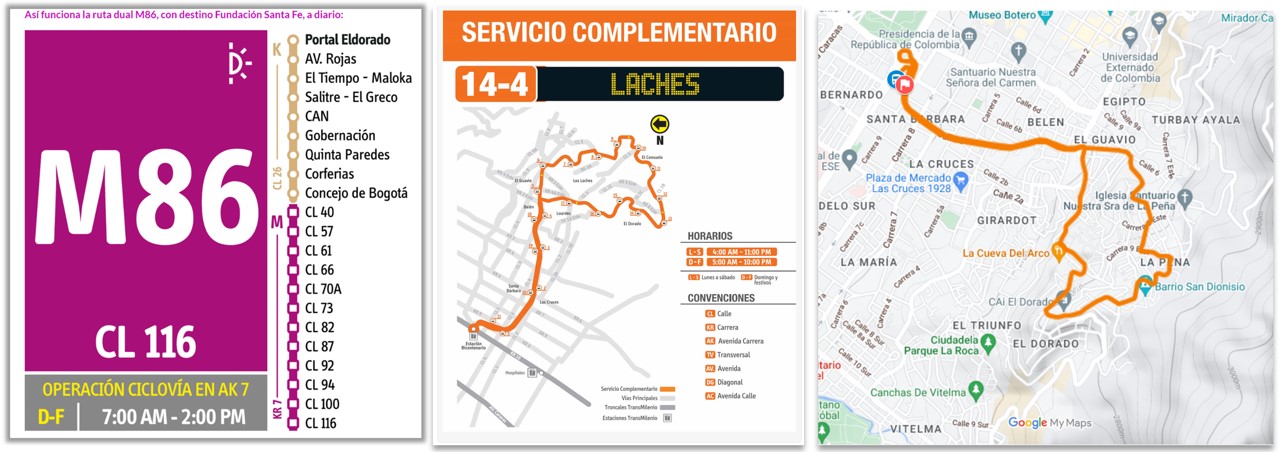
Transmi Bus stations have maps at all the stations and display the line and stops. Each line has a ´stopping service´(slow but stops at every station) and more complicated express routes that you need to check carefully where it stops. Transmi troncal services are usually much faster than the urban buses since they have their dedicated Transmi bus lanes.

Dual Buses are specially designed to run on both road routes and Transmi lanes. A useful Dual Bus, if you are on a budget (or in a hurry) to reach the airport is Ruta 86 which runs from Santa Barbara to El Dorado Airport (K86) covering the Avenida Septima and Avenida El Dorado. The return journey El Dorado to Sant Barbara is M86. Note that on Sundays or Festivos when the ‘ciclovia’ takes place, Septima route switched to the Carrera 11 or 13 (see the link above)
The Transmi buses connect to the TransMiCable at Portal El Tunal, see my post here, a great excursion to the south the city.


Sightseeing in Bogotá by bus
Travelling Bogotá by bus is a great way to see the city, meet some friendly locals, and visit parts most people (including many Colombians!) never reach. A recent ride (1.5 hours, two buses) took me to the amazing Mirador de Juan Rey and Entrenubes park in San Cristobal in the highest barrios of the southeast of the city. Buses and Transmi run from around 4am to midnight, though I would not recommend taking late buses unless you feel confident in the city.
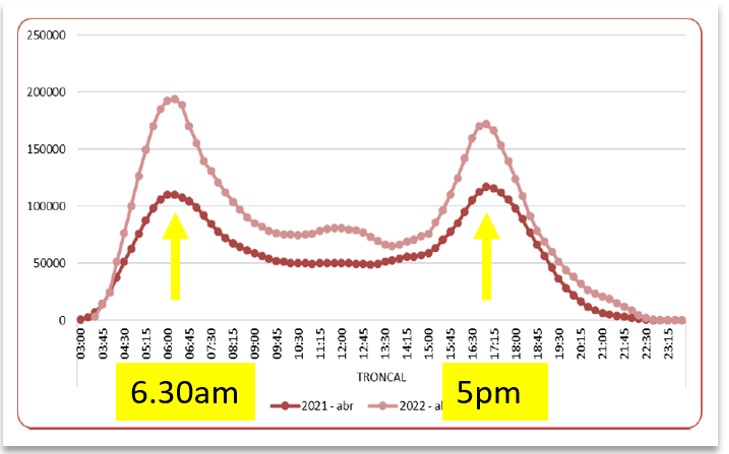
Plan your routes to avoid the peak hours when commuters pack like sardines into many buses, and the Transmi stations get so clogged it can take half an hour to reach the platforms. Peak hours are working days from 6am to 8am and 4.30pm to 7.30pm. Most bus users are early risers, and many rolos spent more than hour commuting to work.
Note that urban buses might be easier to get on during peak hours, but will be slowed to a snail’s pace by traffic jams. In contrast, Transmi buses will be harder to get on because of the crush on the platform – but once on board you will travel much faster as these buses have dedicated lanes.

Staying safe on the bus
Taking a Bogotá bus is not a dangerous activity, you are more likely to be drugged in a gringo bar or ‘express kidnapped’ by a gangland taxi driver in Zona T. But pickpockets and muggers to ride on both Transmi and urban buses, and of course routes pass through very poor barrios where overseas visitors rarely venture. In theory you might be a target for local crims, though more likely only find very friendly people and the cheapest corrientazo.
Some tips for reducing risks:
- travel with a friend
- avoid peak hours, or late night
- use a Tullave card (rather than debit or credit card) to pay fares
- don’t carry any unnecessary valuables (leave the passport at home or in the hotel safe)
- dress down and avoid flashy jewellery/watches.
- put money/cards/phone in deep pockets preferibly with zip.
- carry flash cash in your front pocket to give quickly to any muggers.
- sit towards front of bus and away from exit doors (to avoid ´grab and run´attack)
- In the south of the city, you can plan trips using Alimentadores (feeder buses) which start and end journeys from the (relatively) safe Transmi portal buildings.
- use your cellphone sparingly (see what other passengers are doing)
- never resist a mugging, attackers here are ALWAYS armed.
- carry some loose change in coins to give to beggars/performers on the buses. They are usually friendly and don’t mind if you don’t pay, but they probably need the cash more than you.
